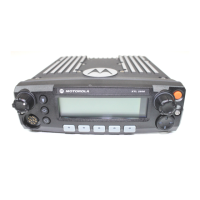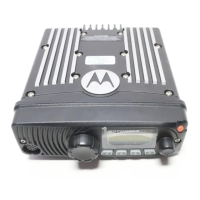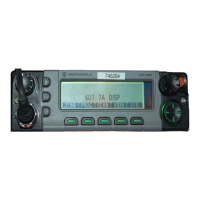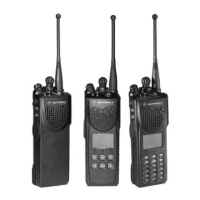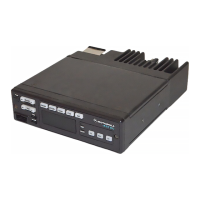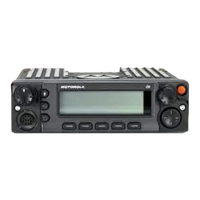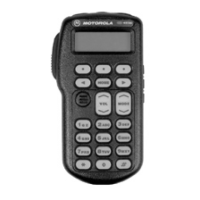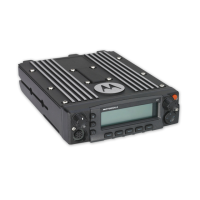June 11, 2003 6881096C73-O
3-8 Basic Theory of Operation: Control Head Assembly
3.8.8 Vehicle Interface Port (VIP)
3.8.8.1 Remote-Mount
The VIPs allow the control head to operate outside circuits and to receive inputs from outside the
control head. There are three VIP outputs that are used for the W9 control head and two VIP outputs
for the W3, W4, W%, and W7 control heads. There are also three VIP inputs that accept inputs from
switches. See the cable kit section for typical connections of VIP input switches and VIP output
relays.
The VIP output pins are located on the back of the control head below the area labeled “VIP.” These
connections are used to control relays. One end of the relay should be connected to switched B+,
while the other side is connected to a software-controlled on/off switch inside the control head. The
relay can be normally on or normally off depending on how the VIP outputs are configured. The
function of these VIP outputs can be defined by field programming the radio. Typical applications for
VIP outputs are external horn/lights alarm and horn ring transfer relay control.
3.8.8.2 Dash-Mount
The VIP outputs are driven by a serial-to-parallel shift register. The output transistors are capable of
sourcing 300mA current. Primarily, these transistors control external relays. The relay is connected
between the collector and switched B+.
Each VIP input transistor is connected to a dedicated input port through transistors used for input
protection. These VIP inputs are connected to ground with either normally open or normally closed
switches.
3.8.9 Control-Head Power Supplies
This section describes the control-head power supply operation.
3.8.9.1 W3 Control Head
W3 control heads supply power to the switched B (SWB+) line through a P-channel power MOSFET
from the HLN6885 interface board only.
3.8.9.2 W4 Control Head
For W4 control heads, power to SWB+ is supplied by a mechanical switch on the volume control
knob. If the ignition line option is used, power to the switch comes directly from the ignition wire
instead of A+.
3.8.9.3 W5, W7, W9 Control Heads
SWB+ is supplied from A+ through an N-channel power MOSFET driven by the Serial Input/Output
(SIO) IC in the legacy control heads. SWB+ supplies power to the accessories, the VF display, the 5-
volt regulator, and the power-control line for the main board for all other voltage regulators on the
main board. The SIO IC monitors the condition of the power switch and the ignition switch to
determine the on/off state of the radio.
3.8.10 Ignition Sense Circuits
A transistor senses the vehicle ignition’s state, disabling the radio when the ignition is off. For
negative-ground systems, the orange lead for remote-mount radios and the red lead for dash-mount
radios is typically connected to the fuse box (+12 V).
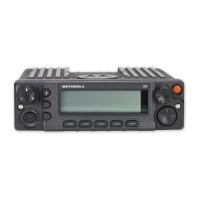
